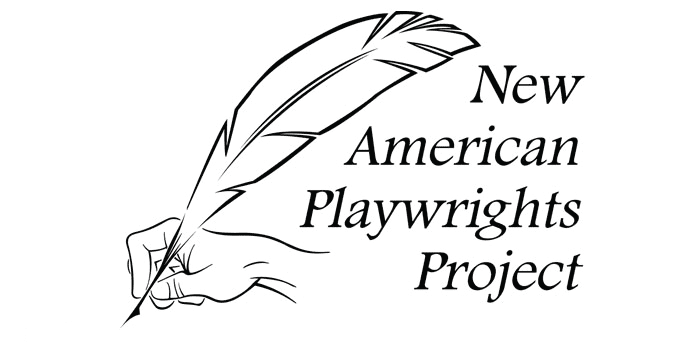[gss-content-box color=”yellow”]READINGS / WORKS IN DEVELOPMENT: We love to see new work developed by Utah theatre artists. On occasion, we are invited to performances of pieces (sometimes still in development) that are staged as a reading. These events differ from standard productions in that more focus is placed on the script, and less on the technical elements of the production. With that said, we’d like to shift the focus of our “reviews” for readings. More emphasis will be placed on the script and at the end we’ll comment a bit on the production. It is our hope that more Utah theatre patrons will seek out opportunities to participate in, and encourage, the development of new theatre in our great state. Thank you for reading! [/box]
CEDAR CITY — The second play in the Utah Shakespeare Festival’s New American Playwrights Project (NAPP) is a play that has an intimate tie to the program’s mission. Written by Salt Lake City-based playwright Kurt Proctor, Turquoise Wind takes place in Moab, Utah. The play is peppered with references to Eastern Utah and features situations and problems well known to rural Utah’s residents.
 Turquoise Wind has only four characters: Toni (Jacqueline Antaramian), a mid-40’s gift shop owner; Lisa (Tina Scariano), her friend who works as a river guide and real estate agent; Charlotte (Megan C. C. Walker); and Dawn (Melisa Pereyra), a very pregnant out-of-towner who visits the shop. These characters were all modern women who find themselves dealing with money troubles, personal life struggles, and the other issues that characterize 21st century life.
Turquoise Wind has only four characters: Toni (Jacqueline Antaramian), a mid-40’s gift shop owner; Lisa (Tina Scariano), her friend who works as a river guide and real estate agent; Charlotte (Megan C. C. Walker); and Dawn (Melisa Pereyra), a very pregnant out-of-towner who visits the shop. These characters were all modern women who find themselves dealing with money troubles, personal life struggles, and the other issues that characterize 21st century life.
If my synopsis sounds familiar, it would be because the themes and overall story arc of Turquoise Wind closely follows the format of Steel Magnolias. Both plays have a vulnerable newcomer in the town, a pregnacy, the wealthy formerly married character, the establishment owner and proprietor, the friend who visits often and talks about her troubles, and more. Of course, Proctor didn’t copy the classic play, and to say that the Turquoise Wind is a ripoff of Steel Magnolias would be blatantly untrue. In the staged reading there is no diabetic, no grouchy old curmudgeon, etc. But both plays share clear themes, and I’m not entirely sure whether Turquoise Wind gives anything new to the theatre going public.
Proctor created in Turquoise Wind enjoyable characters that I found easy to understand and sometimes relate to (despite me being male and significantly younger than most of them). All four characters seemed like 21st century versions of the women who inhabited the American West 150 years ago. If Toni, for example, had been born in the early 19th century, she would have been a pioneer homesteader scratching out a living from a dusty, unforgiving patch of desert near the Green River. This made their spiritual connection to the majestic landscapes around Moab more believable and helped me understand why they stayed there in difficult economic times. Some credit for these positives is likely due to director Joshua Stavros, who brought the script’s interested Western themes to the forefront of the performance.
However, sometimes my sympathy with the characters was disturbed by the dialogue. Proctor sometimes has his characters talk past each other, rather than two each other. In other words, sometimes a character would say something to another and the would receive a reply that would not indicate that the the listener had heard what was said (such as when one character was discussing floods and another was talking about the motherhood). I felt that if the characters weren’t listening to each other then it probably wasn’t important for me to, either. Some of the dialogue also felt repetitive (such as Charlotte’s belief that everything is a sign), which made the characters—especially Charlotte—seem one-dimensional.
Another problem with this script is that the foreshadowing is a little too clear, which leaves the events in the second half unsurprising when they happen. Perhaps in a full production with lights, costumes, and an interesting set, the visual elements would distract audience members enough that the hints in the script about future events wouldn’t be as obvious. But in a staged reading when Dawn was introduced, I immediately correctly guess exactly what would happen to her on stage.
As a work in progress, Turquoise Wind was a suitable selection for NAPP. Proctor has some good ideas rattling around in this script. If the characters’ connection with the West is emphasized, it will feel less like a Magnolias copy. Although I have pointed out several issues I have with the script, I do not feel that these are insurmountable. Turquoise Wind could conceivably be a fully produced play on the season of Plan-B Theatre or a similar company.
[box type=”shadow”]The remaining staged reading of Turquoise Wind, part of The New American Playwrights Project at the Utah Shakespeare Festival, plays on August 30 at 10 AM in the Auditorium Theatre on the campus of Southern Utah University. Tickets are $10. For more information about this production and other staged readings of plays in progress at this year’s New American Playwrights Project, visit http://www.bard.org/plays/napp2013.html.[/box]
